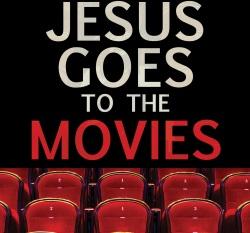The Youth Cartel, 2015, 310 pp., $19.99
Every now and then, one comes across a youth ministry title that—very déjà vu—hearkens back to a previous resource such as Stephen King Goes to the Movies. Here, we have a case of mistaken identity as Joel Mayward’s exploration takes us backstage, onstage, upstage and into our seats without Dolby headphones. In fact, as soon as I read the opening credits, I was hooked.
It is apparent from the opening scenes of Jesus Goes to the Movies that Mayward has created far more than a youth ministry film guide. What he has written is a well-balanced and insightful sourcebook for using cinema in youth ministry. Don’t think it can be done? Well, Mayward does a fine job of answering those critics who simply can’t see correlations between youth culture and movies, who can’t glean theology from cinema, or simply don’t know where to begin.
This is far more than a book of discussion guides for individual movies (though there are 50 or so of these excellent selections in the second half of the book). In the opening scenes, we find ourselves schooled in everything from theology to culture to discipleship, as well as tips about how to look for these themes and questions at the movies. Mayward’s various “Intermission” chapters alone are worth the price of admission. Here he provides us with his personal selections such as “12 Movies About Youth Ministry and Discipleship” (How does Good Will Hunting grab you?) or “25 Movies Every High School Teen Should See Before They Graduate” (2001: A Space Odyssey, It’s a Wonderful Life, The Truman Show—Yes!—and many more).
The fact is, this book will get anyone thinking about faith-correlations at the movies, and Mayward—a film critic and pastor—has produced much of the hard work already. I could see this book sitting on the corner of many youth ministry desks, greasy with popcorn butter and smeared with chocolate fingerprints.
As with any book dealing with pop culture, readers often will wonder why certain movies weren’t included or not discussed in these pages, but that’s part of the book’s ambiance. It invites conversation and participation. The author tells us up front about the three movies that impacted him at various points in his life and why. In the case of A Thin Red Line: “I was hooked. The images and voices washed over me, soaking into my soul. Something about that particular film moved me, affected me, changed me. This was my first experience with the transcendent nature of film.”
No doubt this book will be “a resource for youth workers, pastors, parents, teens and young adults who seek to develop a theological approach to watching movies.” However, Mayward could have included old guys such as myself in his list, as film might be the one medium that can build intergenerational conversation. Perhaps if there were more movie nights for which old and young could come together to explore the themes and questions in film, we would have a beginning point for understanding theologically and culturally where we are and from where we have come. The chasm is not so wide as it might appear in HD…or in silent film for that matter.
As the end credits roll, it should also be noted that Jesus Goes to the Movies is chock full of inspirational tidbits and thought-provoking questions about your favorite films, too. No one will have to create a movie discussion guide or biblical reference out of whole cloth ever again. Let us give credit where credit is due.




